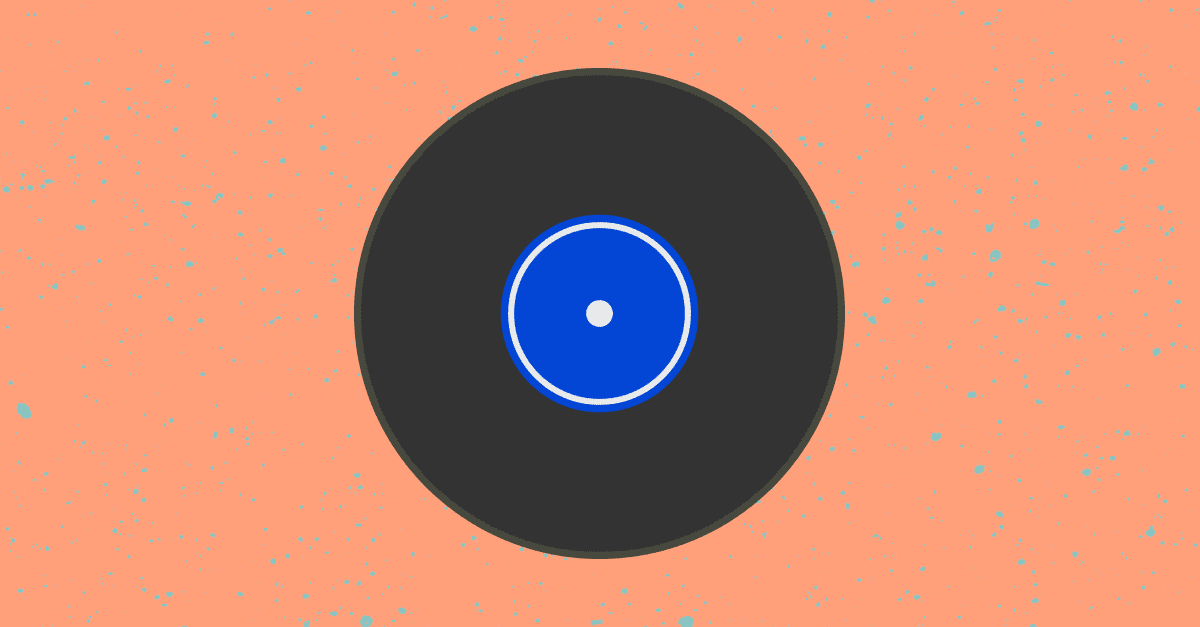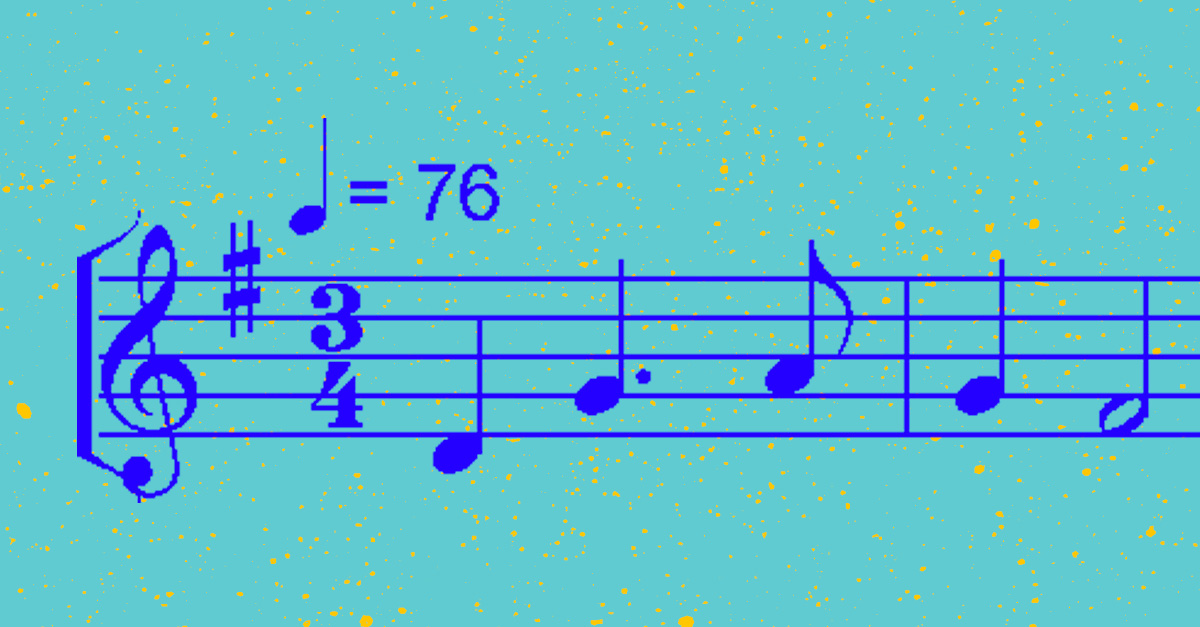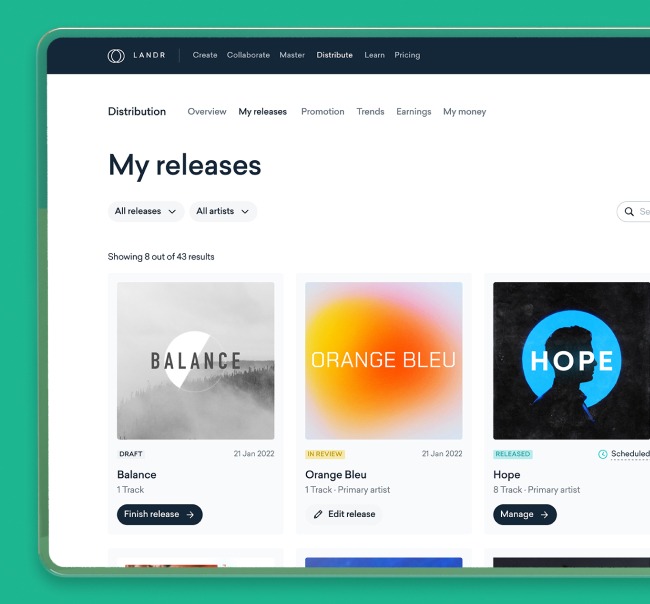
Album Sequencing: How to Give Your Releases Perfect Flow

You`re done your album mixing and you`re almost ready for album mastering. All that`s left now is to arrange your song order just right.
When all is said and done, what makes an album flow?
It’s called album sequencing—and smart sequencing is what makes your songs into an album. It’s a lost art that will keep your listeners going until that last fade out.
But what comes first? What goes last and what’s in between?
In this article you’ll learn tips on ordering your tracks, how to create silences and fades between your songs, and how to create a compelling album feel with sequencing.
Theory guides, production tips, new free plugins, gear guides and more—delivered weekly
Keep up with the LANDR Blog.
What is album sequencing?
Album sequencing is the process of ordering the songs on an album, EP or mixtape.
Sequencing includes defining the silence between songs, crafting fade-ins and outs between tracks and choosing the order of music on a release.
Why is album sequencing important?
Album sequencing is important for many reasons.
It’s your last chance to curate the presentation of your songs before you distribute your music.
Sequencing defines the relationship between each song. Without good sequencing, your album is just another playlist.
Without good sequencing, your album is just another playlist.
Playlists and streaming have changed how we listen, but albums aren’t going away. Single songs might get listeners interested initially, but full-lengths are how you turn them into fans.
You’ve worked hard on every other part of your album, so take the time to concentrate on sequencing. If done well it can give every moment on your album more impact.
But how do you create that impact and make it last?
How to create a compelling sequence
Sequencing is one of the most relatable, intuitive and fun parts of working on your album.
If you grew up listening to music you already have a feel for it. Keep that in mind as you go—If something feels right, it probably is!
Sequencing is one of the most relatable, intuitive and fun parts of working on an album.
There’s no right or wrong way to sequence an album, but there are some useful guidelines to think about as you go.
Here are some tips to get you started on sequencing your release:
1. Start strong
Lead with an impactful track.
It’s vital for inviting your listeners in for the long haul. The lead track is your album’s first impression, so make it count.
2. Cherry-pick your singles
If a song from your album has already been released as a single, put it early in the lineup.
Let your fans connect with the tracks they recognize early on.
3. Think like a record
[adbutler zone_id=”291816″ secure=”1″ type=”asyncjs”]
Vinyl records have an A and B side. Your listeners might not necessarily get to experience your tracks on vinyl, but the idea of an A and B side can help structure your sequencing.
Putting longer or more challenging tracks near the end will give all those major music enthusiasts something to put on their ‘deep cuts’ playlist.

4. Think of your album sequence as a narrative
Excuse the cliché, but your album is a journey!
It’s one of most appealing things about the album format and a big part of why albums still matter.
Sequence your tracks to build and release tension over the whole release. Your tracks will hit harder individually, and the overall effect will be enhanced.
If you have a string of moody tracks, try following them up with something more up-lifting.
The opposite works too. Group similar tracks together to sustain a vibe.
How to sequence your album in your DAW
Now that you’ve got a sense of the order of your songs, it’s time to arrange them in the DAW.
The best way to sequence an album is to bring all your bounced songs into a new DAW session.
This will allow you to easily switch the order, add gaps, and take care of your fades in relation to the rest of your tracks.
It’ll also let you hear how they’ll playback for an actual listener and help you ensure all your audio is ready for album mastering.
The two technical tools you need to know for sequencing in your DAW are fades and silence. Here’s how to use both to create the perfect album flow.
1. Add Fades
Applying fades is one of the most basic functions of your DAW.
Understanding fades and using them musically to enhance the sequencing of your album is an art form. It sets the tone for how the listener will interpret the silence that separates your songs
When done right, fades can be a haunting and dramatic feature of your album sequencing.
There isn’t really a hard rule about which type of fade works best where. The best advice is to use your ears, but keep the different styles in mind. It might not be obvious which one is best right away, so experiment with all of them from track to track.
Think about creating a fade-in or fade-out as a musical performance.
When done right, fades can be a haunting and dramatic feature of your album sequencing.
2. Add Silence
When it comes to sequencing, silence is just as powerful as sound.
When it comes to sequencing, silence is just as powerful as sound.
The gaps between your songs allow you to create the pacing for your album.
Longer periods of silence between songs can “reset” the listener. Use these longer breaks to your advantage. For example, this can be helpful if you need to take the listener’s focus away from two tracks that sound alike.
On the other hand, a shorter duration of silence can help you sustain a certain mood. Keep the longer silences for when you need to create the right change-up between songs or moods.

3. Let the ambience do the work
Allowing the full decay of a reverb tail to ring out can also prepare listeners for what’s coming next.
Again, you can use this effect to draw attention away from similarities between two tracks.
Try to treat your fade out like an extra part of your next song’s intro. The order of your songs and the ambience you leave should be linked.
4. Don’t see it, hear it.
Listen to your music for clues on how to treat your silences.
Close your eyes while trying to determine silences. The visual reference your DAW provides can trick you into focusing more on how things look than how they sound.
Don’t let the grid trick you into picking the wrong gaps. Sequencing is all about the feel of the album, so try to rely on that.
5. Feel the pulse
Counting your bars and beats to determine the silence between tracks is a great way to add some rhythm to your silences.
Counting your bars and beats to determine the silence between tracks is a great way to add some rhythm to your silences.
This approach works to sustain the same energy between rhythmically similar tracks. Use your transients as markers and arrange your fades and silences accordingly.
Hot Tip: Don’t rely on this approach all the time. It can get predictable.

[adbutler zone_id=”291816″ secure=”1″ type=”asyncjs”]
6. Zoom out
Be careful when examining your fade times under a microscope. Hyper-focus might cause you to hear shorter periods of silence as longer than they actually are.
Be aware of this effect so you don’t make your gaps too short.
Again, fades are all about hearing, not seeing. Listen before you look. If it sounds good then it is good!
Dream sequence
Sequencing is artistic. It’s just as important as mixing or arranging. You need to think of it as an extension of your songwriting.
Deciding exactly how listeners will experience your finished album is super satisfying. Think about your own favourite albums. It’s easy to see how the album sequencing plays a huge role in how we experience music.
Try to bring the same attention to detail to your own albums.
Now that you have some ideas about album sequencing your own masterpiece, get back to your DAW and enjoy the silence!
Gear guides, tips, tutorials, inspiration and more—delivered weekly.
Keep up with the LANDR Blog.




